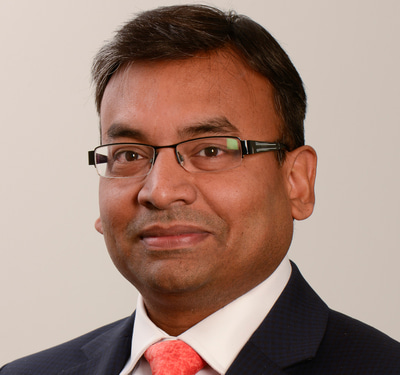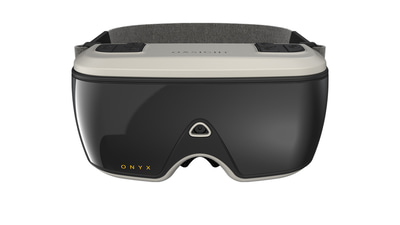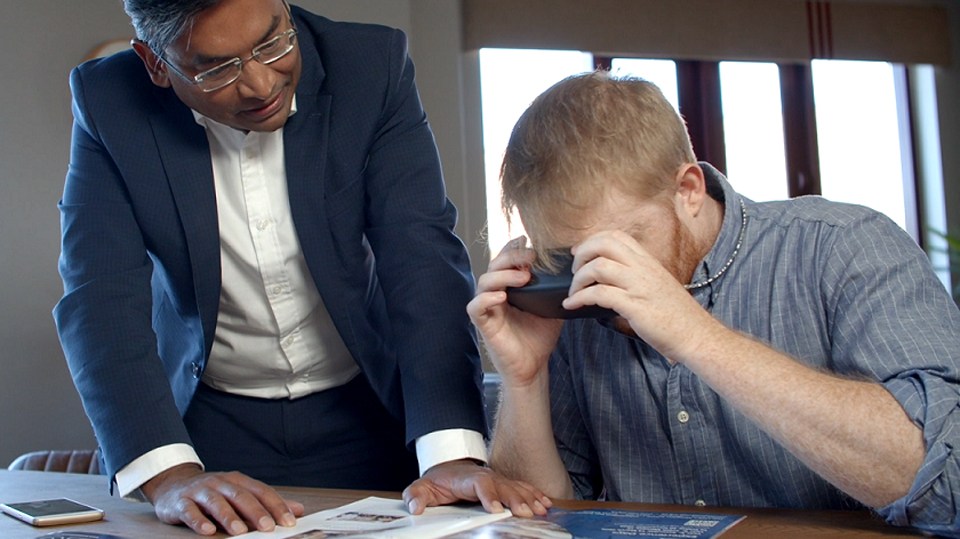- OT
- Industry
- Eyewear and lenses
- Enhancing vision to improve quality of life
Behind the brand
Enhancing vision to improve quality of life
Oxsight CEO, Dr Rakesh Roshan, tells OT about the company’s newest product, its key focuses for the future, and how it navigated the hurdles of COVID-19

05 August 2021
Could you share a brief insight into the background of Oxsight?
Oxsight was formed in 2016 as a spin out from the University of Oxford. We are commercialising research that originally took place at John Radcliffe Hospital in the eye hospital department.
As we all know, a very small proportion of people who are sight impaired have no vision; the majority of them will have some residual vision and with the use of our AI vision technology and smart glasses, we are helping people to enhance their remaining vision so that they can live a better quality of life.
What is the latest device that you released and why does it stand out from the crowd?
There are several types of major sight impairment. One is where people lose their peripheral vision, so their vision is very narrow in the centre. Another major condition is where people lose the central vision and the vision remains in the periphery. If you look at the statistics, the largest numbers of the population are in this latter category.Our company’s strategy has been that, given the nature of these types of sight loss, you cannot have one solution that addresses them all. We decided to design devices that are meant for particular types of eye conditions. As a result, Oxsight Crystal was designed for people living with retinitis pigmentosa, for example, so somebody with a four or five degree field of view can have this enhanced to 68 degrees.
But that particular technology would not work for central vision loss issues and that led us to design our next generation of glasses, which we call Oxsight Onyx. This product is in the final stages of product development and manufacturing of some parts has already started. We are hoping to launch this product in summer.
Oxsight in three fun facts
- Oxsight had a request from a patient to get married wearing one of the early Oxsight Onyx prototypes as he wanted to see his bride walk down the aisle. Unfortunately, due to COVID-19, the wedding has been delayed until 2022 – but the company said: “It does mean that now we will ensure he gets his wedding day wish.”
- Oxsight planned a “big day” in August with an individual who helped with the early product trials and who has in the past six months given birth to her first child. The company told OT: “We can’t wait to give her the opportunity of seeing her baby’s face in detail for the very first time. It’s magical moments like this that makes what we do so worthwhile.”
- The company often sees customers who fly in from around the world to test and purchase Oxsight products in the UK – the furthest has been from New Zealand.
What has the development of Onyx involved?

The new product benefits from the learnings that we had from Oxsight Crystal, because some of the computer vision software programme that Oxsight Onyx uses builds on what we developed when Oxsight Crystal was being researched. Every time Oxsight introduces a new product, the time to market is accelerated because of the learnings from the previous generations of the product.
What makes Oxsight products unique?
I would say we are unique because of the iterative manner of product development, a close interaction with customers, understanding customer requirements, and then delivering a technology that solves their problem.Developing technology in isolation doesn’t really tick the boxes of the customer, so understanding their requirements is extremely important. We spend a lot of time with them throughout the journey of product development and that is what makes us quite unique. Every corner, every curve in the device, every colour that we choose, and the way the images are presented, is all designed for a purpose, and that is because it is what the customer will benefit from.
As an example, when you switch on Oxsight Onyx, the default way that users will see the images on the glasses has been colour shifted to the peak of their eye sensitivity.
What are the key considerations Oxsight keeps in mind when creating smart glasses for people with vision impairment and sight loss?
Any product that is going to be successful in market will have to fit the magic triangle of functionality, usability and wearability. Functionality means it should have all the functions that will help the particular eye condition the product is designed for, wearability means it should be comfortable and meet the requirements of that individual, and usability is the user interface – you should be able to use the devices straightaway, or without having to go through a lot of training.It’s very important that the three key aspects of the device or the product are met. My observation is that most of the products that exist out there somehow do not maintain the balance between these three key points.
I think Oxsight maintains a very good balance between these key points. Oxsight Onyx is also especially designed to keep the cost low. Once it has launched, we believe it could be one of the most economical devices on the market.

What are the company’s main ambitions for the next 12 months?
We have two key ambitions currently. The first is to launch Oxsight Onyx and be able to go through the product market validation stage with the customers, and then scale up that technology.The second one is to continue to innovate; work on our next generation product and improve the appeal and performance of these devices so that customers can continue to benefit. This means continuing to listen to customers and their feedback on what their requirements are, and continue to develop new and better products in the market.
I think our longer-term aspirations are to make sure that every person with a visual impairment has a solution that they can benefit from and they can afford.
What is Oxsight looking at next? Are there any products in development that customers should be aware of?
What we have seen is that when a visually impaired person uses smart glasses, they are actually interested in just a few things. There is a lot of clutter out there in the visual world and not all of that is going to be useful for the user. The next generation technology we’re trying to develop is a very personalised piece of technology that allows the user to focus on things that they are interested in and cut out everything that is not of their interest. That’s where the real value of AI will come in.
We are also interested in the function of the brain with the eyes. If you look at the physiology of how we see the world around us, it is a dual act where our eyes and brain work together to build the information and the picture that you see around you. Given that 80% of our interactions with the wider world happens through our eyes, it is a very important sensory organ. Even those of us with healthy eyes are blind in some way or another. For example, a psychological experiment identified inattentional blindness; we are able to see things much more clearly when we focus on them, but the things in our periphery or that we are not focusing on, we cannot see. As a result, there is an opportunity to build technologies, not only for people with visual impairment, but also for those with healthy eyes in order to increase their productivity and bring in information that is outside of their attention area.
I think our longer-term aspirations are to make sure that every person with a visual impairment has a solution that they can benefit from and they can afford
Thirdly, every big company now – Facebook, Google, Intel, Apple – is developing smart glasses. Smart wearables will become a norm. I use the analogy that 30 years ago we watched television but now we use smart televisions, and where we used to use telephones, everybody has shifted to smartphones. So, the glasses that everybody wears will shift to smart glasses. And people will require their smart glasses to do more for them, processing more visual information, and the visual data will increase.
In one way, this is counterproductive, because if you want your smart glasses to do more processing, then it requires a much bigger battery and more processing power. This will in turn generate a lot of heat, and to manage this, the glasses will need to be bulkier. One of the areas we are exploring is how people can get more from these glasses, without affecting the three key points of wearability, usability and functionality. We think that remote data processing – connecting the smart glasses to the cloud – would be the way forward.
What effect has COVID-19 had on Oxsight? How has the company reacted and adapted to the challenges?
COVID-19 has had an impact on every business and it did impact us quite a lot. We had finished our product market fit with Oxsight Crystal and were about to scale up the sales of the product so we were looking for investment to support the growth of the company, and increase the sales.When COVID-19 came it was difficult to engage with investors in the way we would have done. We were also not able to sell glasses because most of our customers are vulnerable and shielding, so it was difficult to reach out to them. These two challenges were quite significant to manoeuvre around.
Rather than trying to work too hard to sell Oxsight Crystal, we focused our attention on innovation, and accelerated the development and testing of Oxsight Onyx. This allowed us to complete the testing of the beta version of Oxsight Onyx very quickly and meant we are now very close to launching.
Overall things have been quite challenging due to COVID-19, but I think the situation is turning. Oxsight Onyx has a significant appeal in the market and we have more than 1000 people on our database who are waiting to buy this as soon as its launches. We have set up a very large distribution deal in the US for sales of these glasses and we are working with potential distributors here in the UK. Things are shaping back up again and we are really excited to take Oxsight Onyx to the market.
Advertisement


Comments (0)
You must be logged in to join the discussion. Log in